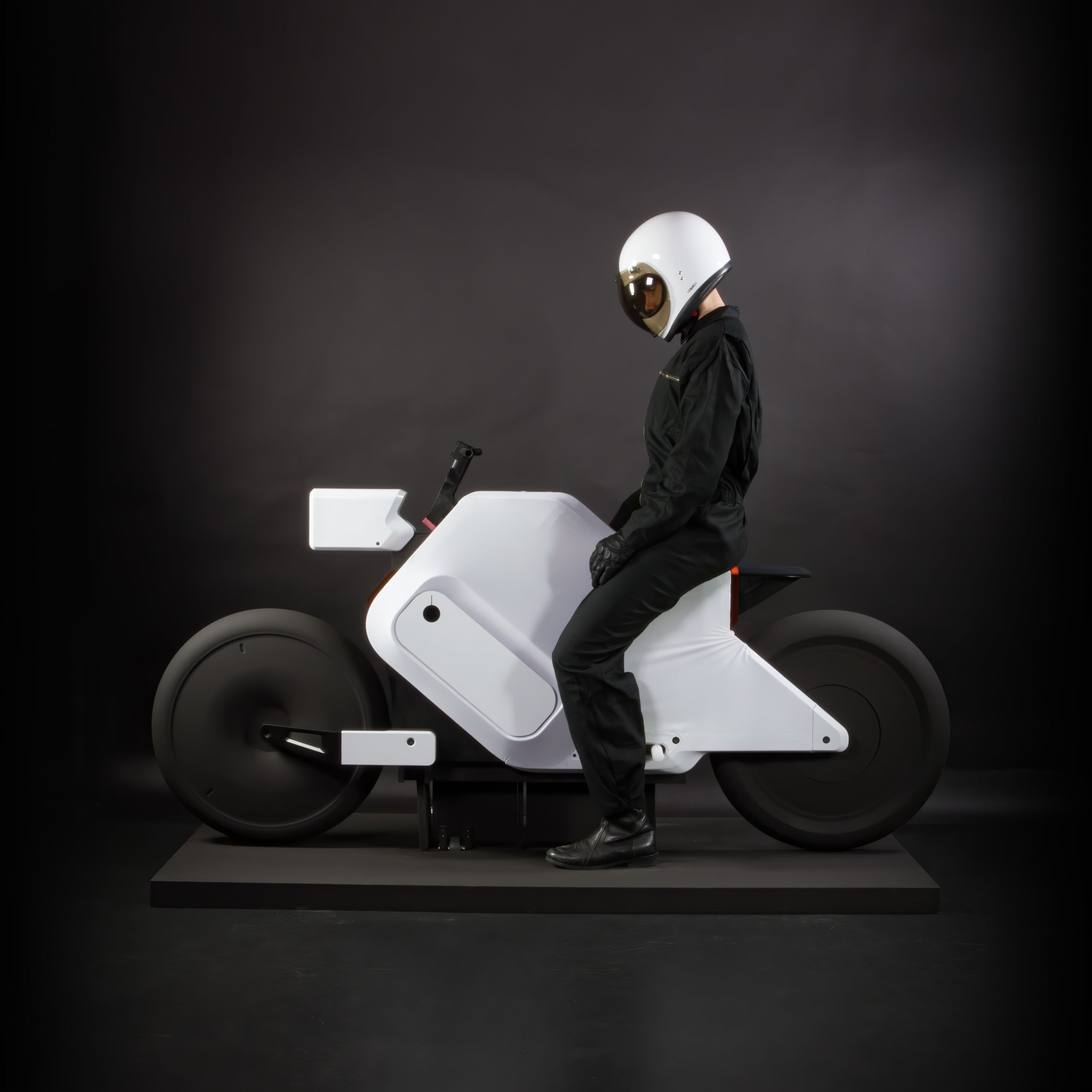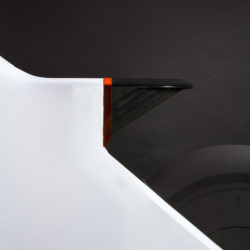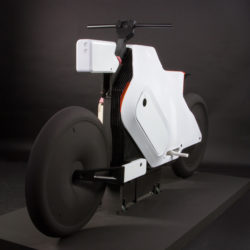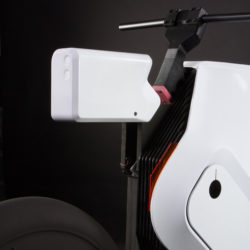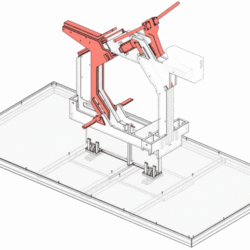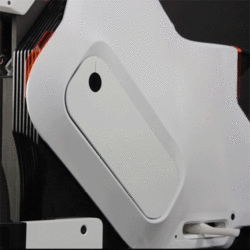e_töff
Description
E_töff is an adaptive and reactive motorbike design study that makes commuting between the outskirts and the city centre more intuitive and safer in the ever increasing traffic density. By ergonomically changing the seating position, the rider adapts to the requirements of different urban spaces. In addition, a dynamic balance system supports the driver during slow driving manoeuvres and in potentially dangerous situations. In order to detect these dangers at an early stage, improved 360° sensors monitor the surrounding traffic and transmit information to the driver via tactile feedback.What is the Topic?
It was investigated how the electric motorbike can be implemented as a valid mobility supplement in heterogeneous urban traffic. The designed principle does not claim to be a universal answer to the increasing traffic volume in conurbations - rather it is a legitimate bridging technology within urban mobility. This premise essentially places two requirement profiles on the motorbike: Firstly, as an adaptive system, it must be able to adapt intuitively to different urban spaces and their special requirements for seating position and speed. On the other hand, driving assistance systems must improve road safety through cooperative automation without distracting or overburdening the driver from the dynamic driving processes.
Why does it look like this?
The adaptive and reactive systems have made special demands on the motorbike fairing: Therefore, an elastic textile was chosen in the concept study. Thus, when changing the seating position by moving the handlebars, footrests and seat, the vehicle maintains a homogeneous appearance and protects the pilot_in from the mechanical components. At the same time, the textile forms a tactile interface through which, for example, the balancing oscillating movements of the battery are mirrored to the inside of the driver's thighs. This continuous, subtle communication informs without affecting the primary perception channels of the driver. At the same time, a clear aesthetic decision was made in favour of the textile, giving the motorbike a less technoid but more product-oriented design language.
What is special?
This study uses the advantages of electrification: electricity has no form and the classic architecture of the motorbike can be rethought. The battery itself becomes a stabilising counterweight during slow rides and supports dynamic driving processes at higher speeds. Metaphorically speaking, this process is based on the horse-rider/rider interaction, in which humans interact and cooperate with a semi-autonomous system.
What is new?
Controlling a motorbike requires the involvement of the entire body. Based on this holistic basic idea, the input interfaces for the rider have been extended. For example, posture changes at high speeds automatically lead to a change in seat geometry. The functionality of driver assistance systems is conceived as permanent communication in the bilateral man-machine system: instead of sudden audio-visual signals, the person is permanently informed about the supporting processes.

